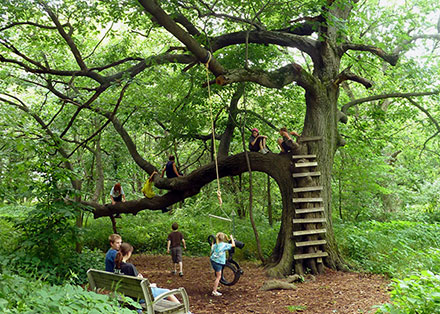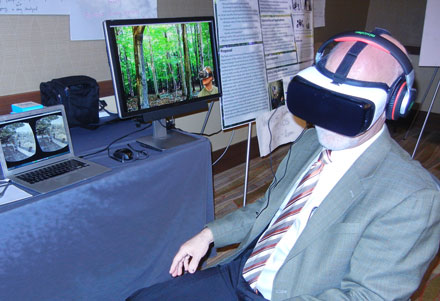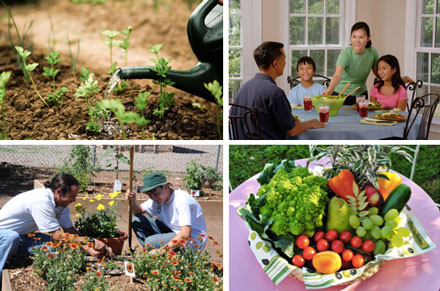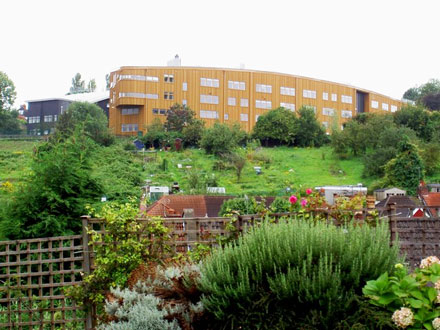Human Health and Nature
Building Census Around Nature Deficit Disorder: Evaluating the Movement to Reconnect People with Nature

In the past 10 years, there’s been growing interest in the movement to ‘reconnect’ people with nature. Nature exposure has been linked to numerous benefits included improved immune functioning, enhanced sense of place, and increased likelihood of pro-environmental behavior. Simultaneously, the amount of time people –in particular children and young adults – spend in and with nature has decreased. A number of conferences, trainings, and other events have been held to discuss how to best overcome what journalist Richard Louv describes as ‘nature deficit disorder.’ Although strong efforts have been made to increase the diversity of people who come to these events, many event organizers want even more diversity in the groups (e.g. more young people, people of non-White ethnicity, policy makers, health professionals, and business owners) which attend these events and engage in discussions about this movement. We have begun evaluating the diverse perspectives different stakeholders have about these events in order to make them more salient, and inclusive, to diverse populations. In particular, we are investigating (1) what are different groups’ goals and desired outcomes for attending these events and participating in this movement, (2) what do different groups feel are the factors for success for this movement, and (3) to what extent do different groups think this movement is achieving these goals and focusing on these factors for success?
The Technology of Healing: Using Virtual Reality to Systematically Test the Health Benefits of Nature Exposures

Housed withing the Virtual Reality & Nature (VRN) Lab, we are conducting an exciting line of research on the physiological and psychological responses to simulated nature exposure. Many studies that examine the health benefits of nature exposure in outdoor environments use generalized notions of ‘nature.’ As a result, we know relatively little about what specific aspects of nature (e.g. bird songs, fresh air, open sky, trees and other vegetation) lead to which health outcomes (e.g. increased physical activity, immunological functioning, happiness, and well-being). One of the reasons for this problem is the difficulty with running scientifically rigorous experiments in natural environments. Virtual reality provides an opportunity to empirically test theories about why nature is good for people. For example, we can expose participants to virtual park settings with differing levels of species richness and forest stratification – or virtual office settings with windows of natural scenes with and without other sensory inputs (e.g. bird songs from recordings, air movement from fans, smells found in nature simulated from scent machines, and sunlight from full-spectrum light bulbs) – and test for differences between groups. We are currently examining the extent to which virtual reality causes similar psychological and physiological responses in people compared to ‘real’ nature experiences. These preliminary studies will build an understanding of what virtual reality can, and cannot, tell us about how our findings translate to ‘real’ exposure to nature.
Intergenerational Greening: Testing the Relationship Between Family Gardening and Health

There is a small body of literature that suggests people who garden are more likely to eat more fruits and vegetables at home, as well as be more healthy in general. We are supplementing this literature by conducting preliminary data in Champaign Urbana. We are inviting a large, diverse, convenience sample of citizens to a short online survey to understand how gardening frequency and location (i.e. home, community, or at church) relate to home cooking and dinning behaviors while controlling for physical activity, sleep, and other possibly confounding factors.
Green Schools, Great Scores: Modeling Academic Achievement with Nearby Greenspace

We are investigating the impacts of near by green space on student performance in Chicago Public Schools. Using a large dataset of test scores and neighborhood canopy assessments, we seek to understand the complex interaction effects on both school setting and student characteristics. Greenness is operationalized using high-resolution LiDAR imagery and coarser, well-established NDVI measures of tree, grass, and shrub cover. Student and school characteristics are being controlled for including gender, bilingual status, race and ethnicity, student-teacher ratio, mobility, attendance rates, free and reduced lunch eligibility, and more. In total, the data comprise over 3 million test scores for roughly 500,000 students in 470 schools. We anticipate our findings will have implications both for schoolyard greening as well as urban and community forestry and urban planning more generally.
Urban forestry’s return on investment: Tying residential nature to health care expenditures

Dozens of studies involving millions of people document the connection between urban forests and human health: in greener places, people are healthier. It is time to document the effects of these forests on actual health care savings. In this project, we work with one of the largest health insurers to examine the impacts of urban forestry on actual health care costs in nearly 4,000,000 people. LiDAR, state-of-the-art technology, allows us to characterize forests in 3D detail. The specific context of this study (Northern California) allows us to examine, in microcosm, the impacts of all major forms of U.S. urban forests on all major population groups, giving the findings direct national relevance. We focus extensively on technology transfer of results to policymakers and the public. Our specific project aims are: (1) document the impact of urban forestry on health care savings, particularly as it relates to underserved communities; (2) quantify how this impact differs by urban forest structure, subsequently providing management/maintenance best practices; and (3) produce a free, online urban forestry return-on-investment model (through Natural Capital’s InVEST) usable by communities across the nation. Funding is provided by the U.S. Forest Service National Community and Urban Forestry program.
